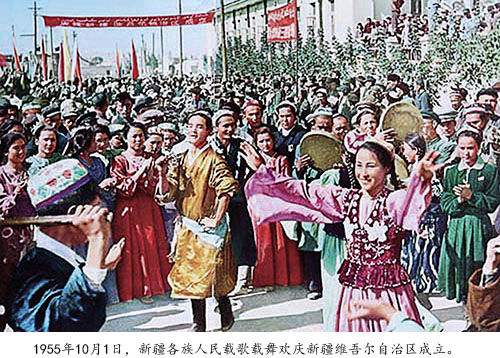Liberation of Xinjiang
2 min readThe revolution of the three regions usually refers to the armed struggles of people of all ethnic groups in resistance of the reactionary rule of the warlord Sheng Shicai and the Chinese Kuomintang which broke out in August 1944 in the three special regions-lli, Tacheng and Ashan(today’s Altay) in Northern Xin jiang. Given the specific historicalcircumstances before and when the revolution broke out, and as the leadership of the revolution was once controlled by top figures in the feudalist and religious circle headed by Elihan Torae,a splittist regime-the “East Turkistan Republic”-once sneaked its way into the three-region revolutionary movement following the preliminary victory in the armed struggles. Therefore, both the history of the three region revolution and our study of that history today present a lot of complexity and contradictions. In that context, we believe that the following points shall be kept on our mind when we study that revolution.

First,a strict distinction has to be made between the armed struggles of people of all ethnic groups in Xin jiang against exploitation and oppression in that period on the one hand and the splittist activities of a few feudalist top figures on the other. We should give full credit to the just and revolutionary nature of the resistance struggles of people of all ethnic groups before condemning the reactionary practice of a few top feudalist and religious figure to create separation once again.
Second, we should clearly differentiate the three-region revolutionary movement from the splittist regime of “East Thurston Republic”that smuggled its way into that movement.
The establishment of that splittist regime was by no means the original intention of thethree-region revolutionary forces, but rather the private design of the top feudalist and religious figures who controlled the revolution’s leadership in the early stage. It was something imposed on people of all ethnic groups and a tumor in the three-region revolutionary movement. The revolution and the regime were of totally different nature.
Third, separation went against the fundamental interest of all people in Xinjiang, irrespective of ethnicity. Once they became political awakened, the general public wouldfight separatism firmly. It was with the support from the people that the revolutionary faction spearheaded by Ahmat jan and Abbasov finally enabled, through staunch and unremitting fight, the three region revolutionary movement to break away from splittism and join in the wave of the entire Chinese revolution.

In view of the above principles, it is only appropriate to describe the three-region revolutionary movement in different stages according to the developments and changes in the process.








